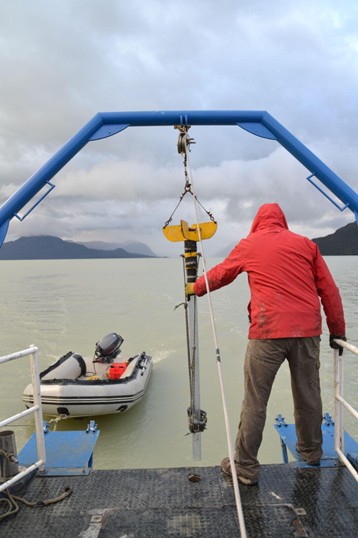Impact du changement climatique sur les risques hydrologiques et le cycle du carbone aux hautes latitudes
Financement : ANR – Paris-Saclay University
Porteur du projet : S. Bertrand (GEOPS)
The goal of the CPJ high-latitude project is to use sediments deposited in lakes and fjords to investigate the interactions between the different components of the climate system (atmosphere, ocean, cryosphere, biosphere). It addresses three main inter-related research themes:
1) Impact of climate change on hydrological hazards in glacierized regions
Glacial Lake Outburst Floods (GLOFs) are catastrophic events that result from the abrupt release of meltwater from moraine- or ice-dam lakes due to dam failure. They are among the most destructive natural hazards on Earth. The recent increase in the number and size of glacial lakes worldwide has led to the assumption that GLOF frequency was currently rising. However, how climate change affects GLOF frequency and magnitude remains essentially unknown. Under theme 1, lake and fjord sediment cores will be used to generate reconstructions of GLOF frequency and magnitude during the late Holocene.
2) Impact of climate change on natural hazards in high-latitude regions
Climate change is amplified in polar regions. This is particularly the case in the Arctic, which warms at least twice as fast as the rest of the planet. This polar amplification and the associated intensification of the water cycle and permafrost thaw increase the vulnerability of the Arctic and Subarctic to natural hazards. This theme will use sediment archives to evaluate the evolution of flood magnitude and riverbank erosion in medium-size non-glacierized subarctic watersheds.
3) Influence of climate change and hydrological events on carbon cycling in fjords
Fjords trap and store more organic carbon per unit area than any other marine sedimentary environment. This theme will make use of sediment trap and sediment core data to investigate the influence of climate change on fjord carbon budgets in both hemispheres, at seasonal to Holocene timescales.
